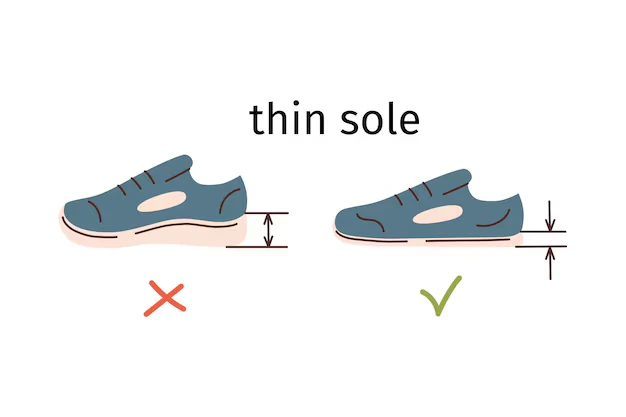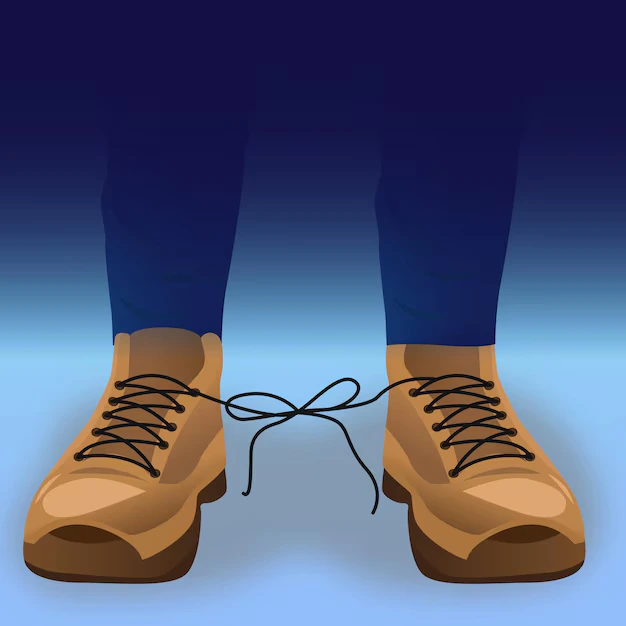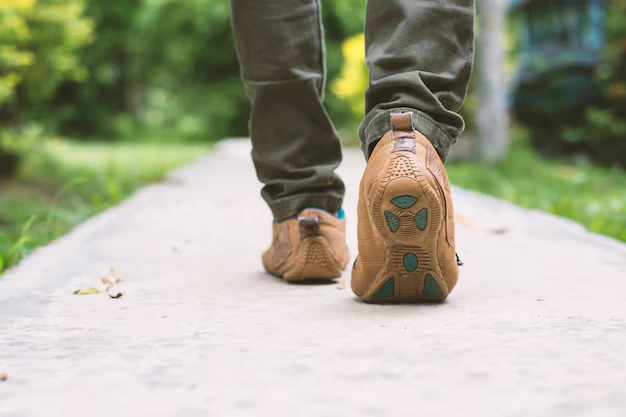Barefoot shoes are a type of footwear designed to mimic the natural movement of the foot as if you were walking barefoot. They feature a minimalist design with thin, flexible soles and little to no cushioning or arch support. The goal is to allow the foot to move as freely and naturally as possible, promoting better foot health and overall body alignment making them one of the comfortable shoes.
Key Characteristics of Barefoot shoes
- Thin Soles: The soles are usually very thin to allow for better ground feel, so you can feel the surface beneath you.
- Wide Toe Box: These shoes typically have a wider toe box to allow your toes to spread naturally, enhancing balance and foot flexibility.
- Flexibility: Barefoot shoes are highly flexible and comfortable shoes, which helps your feet move and bend naturally as you walk or run.
- Minimal Padding: Unlike traditional shoes, barefoot shoes provide little to no cushioning, so your feet use their natural shock absorption, which can help strengthen foot muscles over time.
These shoes aim to promote better posture, foot strength, and natural movement, making them popular among people who are looking to improve their foot health or practice natural movement techniques.
Benefits of Wearing Barefoot Shoes
There are many benefits of switching to Barefoot shoes. Some of them are given below :

- Promotes Natural Foot Movement: Barefoot shoes encourage the foot to move as it naturally would, without restrictive structures. This allows your toes to spread and flex, improving overall foot mobility and comfort.
- Strengthens Foot Muscles: By providing minimal support, barefoot shoes activate and strengthen the muscles in your feet and lower legs. Over time, this can lead to improved muscle tone and strength, helping to prevent injuries.
- Improves Posture and Alignment: Barefoot shoes support the natural alignment of your body by encouraging a more natural gait. This can help reduce strain on your knees, hips, and lower back, leading to better posture.
- Enhanced Balance and Stability: Wearing barefoot shoes allows for better sensory feedback from the ground, helping to improve your balance and stability. This is especially beneficial for activities like yoga, running, or hiking.
- Reduces Foot Pain and Discomfort: Many people experience foot pain from wearing shoes that constrict or force the feet into unnatural positions. Barefoot shoes allow for a more comfortable fit, which can reduce common foot problems like bunions, hammertoes, and plantar fasciitis.
- Increases Circulation: Since barefoot shoes don’t have the tight arch supports or cushioning that many traditional shoes have, they help improve blood flow to your feet. This can result in better circulation, particularly for people who experience swelling or poor circulation.
- Supports a More Natural Gait: When you wear barefoot shoes, you’re encouraged to walk more naturally, with a midfoot or forefoot strike, instead of a heavy heel strike, which minimizes overall injuries.
- Better Ground Sensitivity and Foot Awareness: Barefoot shoes allow you to feel the surface you are walking on, increasing your foot’s sensory awareness. This heightened feedback improves your balance and helps you adapt to different terrains, which is great for outdoor activities.
How to Transition to Barefoot Shoes?
- Start Slowly: Begin by wearing barefoot shoes for short periods each day. Gradually increase the duration as your feet become more accustomed to the new footwear. Slowly transition to barefoot shoes for comfort.
- Listen to Your Body: Pay attention to any discomfort during the transition. If you experience pain or discomfort, take a break and allow your feet to adjust before continuing.
- Incorporate Foot-Strengthening Exercises: Include simple exercises like toe curls or calf raises in your routine. These exercises help build foot muscle strength and promote healthy alignment.
- Gradual Footwear Switch: Rather than making an abrupt change, transition slowly from regular shoes to barefoot shoes. This will help your feet adjust at a comfortable pace and reduce the risk of injury.
- Be Patient: Adapting to barefoot shoes takes time. Be patient with yourself during the process. Over time, you’ll likely notice improvements in balance, stability, and overall foot comfort.
Common Misconceptions about Barefoot Shoes

Many people think they offer no protection. This is a misconception. While they do promote natural foot movement, many designs include durable materials that shield your feet from sharp objects and rough terrain.
Another common myth is that transitioning to them leads to injuries. In reality, injury prevention can improve with proper adjustments. Gradual adaptation allows the body to strengthen its muscles, preventing strains.
Some believe only runners should wear minimalist footwear. However, these shoes are beneficial for everyone—from casual walkers to those standing all day at work—since they encourage healthy foot alignment.
There’s the notion that they aren’t stylish or versatile. The market now offers an array of chic options suitable for various occasions, proving functionality doesn’t have to compromise aesthetics in your wardrobe choices.
Best Brands for Barefoot Shoes
- Vibram FiveFingers
Known for their unique, individual toe compartments, Vibram FiveFingers offer maximum ground contact and flexibility. They’re one of the most popular brands in the barefoot shoe market, especially for running and outdoor activities. - Xero Shoes
Xero Shoes is widely recognized for their minimalist footwear that promotes natural foot movement. Their shoes are lightweight, flexible, and ideal for running, hiking, and casual wear. They offer a wide variety of styles to suit different needs. - Merrell
Merrell offers a barefoot line of shoes designed to encourage natural foot movement while still providing a comfortable, supportive fit. Their shoes are versatile and perfect for both casual wear and outdoor activities. - Vivobarefoot
Vivobarefoot is a leading and highly regarded brand in the barefoot shoe market. They offer a wide range of footwear, including shoes for running, hiking, and casual use. Their shoes are designed to promote a natural gait and improve foot health with their thin soles and wide toe boxes. - Lems Shoes
Lems Shoes creates lightweight, flexible barefoot shoe with an emphasis on comfort and minimalism. Their shoes often have a zero-drop sole and a roomy toe box to allow for natural foot expansion. - Groundies
Groundies offer these shoes with a sleek, stylish design. They are known for their high-quality materials and comfortable fit, promoting a natural walking experience with every step.
Tips for Maintaining and Caring for Barefoot Shoes

To keep your shoes in top shape, regular cleaning is essential. After each use, gently clean your shoes with a soft brush or cloth to remove any dirt and debris.. Avoid using harsh detergents, as they can damage the materials. Instead, opt for mild soap and warm water to gently clean them, ensuring their longevity and comfort.
Drying is also crucial when it comes to maintaining your shoes. If they get wet, avoid using direct heat or placing them in direct sunlight, as this can damage the material and the flexible soles. Air-drying in a well-ventilated area is the best way to preserve their shape and flexibility over time.
It’s important to check the cushioning regularly for signs of wear or tear . Since these shoes don’t have traditional cushioning like other footwear, the integrity of the soles can diminish more quickly. Monitoring the wear and tear ensures that the shoes continue to provide the support needed for natural foot movement.
Proper storage is another key to extending the life of your barefoot shoes. Store it in a cool dry place. To help retain their shape, you might consider using shoe trees, which will help maintain their structure when not in use.
Lastly, rotating between pairs of these shoes can help extend their lifespan. Allowing each pair time to recover between uses prevents excessive wear. A little extra care can go a long way in ensuring your barefoot shoes stay in great condition and continue supporting your foot health.
Conclusion
Transitioning to barefoot shoes strengthens your feet over time and promotes natural foot movement . While it takes patience, the benefits—like improved foot health and injury prevention—are worth it. Listen to your body, avoid common mistakes, and choose the right barefoot shoes for your needs. With proper care, these shoes support healthy foot alignment, helping you enjoy a more natural way of walking or running.
